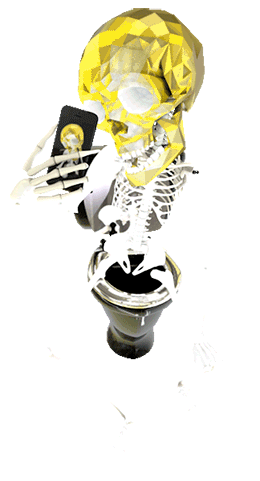Though industrially important, 3D printing has turned out to be nowhere near as disruptive as once imagined, and certainly nothing like the PC. […]
The one 3D-printing method to make it successfully into the home so far is “fused deposition modelling” (FDM). In this, the object of desire is constructed, layer by layer, by melting a plastic filament and coiling it into the shape required. As ingenious as FDM is, the “maker movement” is still waiting for its equivalent of the Commodore 64, a capable and affordable machine that helped pitchfork the hobbyist computer movement into widespread consumer acceptance.
Another type of 3D printing, stereolithography, may yet challenge FDM for personal use. Stereolithography deposits thin layers of polymer which are then cured by laser or ultraviolet light. The technique was patented by Charles Hull in 1986, several years before Scott Crump patented FDM. These two inventors went on to found the two leading firms in the business today, 3D Systems and Stratasys. 3D Systems is bent on reducing the cost of stereolithography, so it, too, can appeal to the masses. […]
At least three things prevent personal 3D printing from going mainstream. The first is that the printing process takes hours or even days to complete. If the desired object is a standard part, it is invariably quicker and cheaper to buy the equivalent injection moulding off the shelf.
The second problem is poor quality. The printing materials, mostly polymers such as acrylonitrile butadiene styrene or polylactic acid, lack the mechanical strength needed for making parts sturdy enough to do a useful job. ABS has good impact resistance but it does not bear loads particularly well. PLA’s virtue is that it degrades naturally into lactic acid, a harmless substance. This makes it useful for printing things like hearing aids, teeth braces and medical implants.
Neither plastic, though, is suitable for fabricating replacement parts for a lawnmower, a child’s bicycle or a vintage car, in which mechanical strength and rigidity are crucial. In all likelihood, things made for handy tasks around the home will need to be reasonably strong, and also require more precise dimensions than today’s desktop 3D printers can manage.
Thus, the third problem—namely, the abysmal resolution of products made by popular 3D printers. Tolerances of at least two or three thousandths of an inch (a tenth of a millimetre or so), not tenths of an inch, are the minimum required for home-made parts that are to be interchangeable, or have a fit and finish necessary to work reliably with one another. Personal 3D printers will remain playthings until they can achieve such standards.
One answer is to print with metals, or even carbon composites or ceramics, instead of plastics. Many 3D printers used in industry do precisely that. Industrial metal printers, for instance, use a process known as selective laser sintering (SLS), in which a powerful laser is fired into a bed of powdered metal to sinter particles together, layer upon layer, into the required outline, until the object is built up. A newer version of SLS, which uses an electron beam in a vacuum chamber, allows the sintering to be done at much lower temperatures.
Unfortunately, SLS printers cost anything up to $125,000. It is going to take quite a while before the cost of printing metals (two orders of magnitude more expensive than printing plastics) becomes cheap enough for home use.
{ The Economist | Continue reading }





















